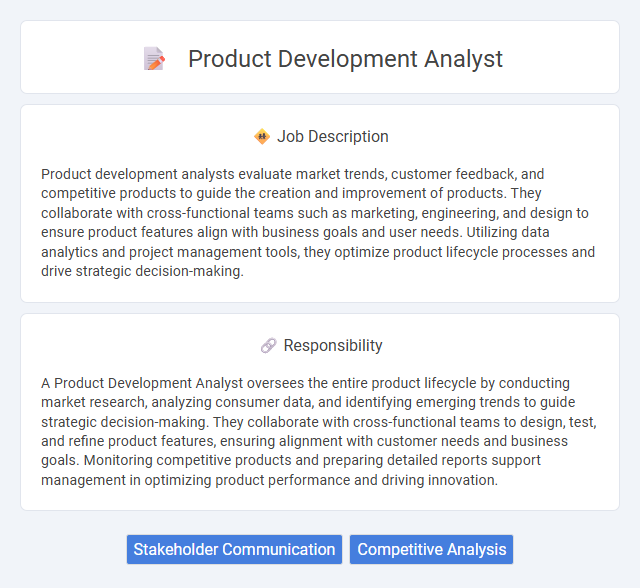
Product development analysts evaluate market trends, customer feedback, and competitive products to guide the creation and improvement of products. They collaborate with cross-functional teams such as marketing, engineering, and design to ensure product features align with business goals and user needs. Utilizing data analytics and project management tools, they optimize product lifecycle processes and drive strategic decision-making.
Individuals who demonstrate strong analytical skills, attention to detail, and an ability to interpret market trends are likely to be suitable for a Product Development Analyst role. Those comfortable working with data, collaborating cross-functionally, and adapting to changing project requirements may find themselves thriving in this position. People lacking interest in research or struggling with ambiguity might face challenges in fitting well with the demands of this job.
Qualification
A Product Development Analyst typically requires a bachelor's degree in business, marketing, or a related field, with strong analytical and problem-solving skills. Proficiency in data analysis tools such as Excel, SQL, and product management software is essential for interpreting market trends and consumer insights. Experience in project management, excellent communication abilities, and knowledge of product lifecycle processes significantly enhance qualification for this role.
Responsibility
A Product Development Analyst oversees the entire product lifecycle by conducting market research, analyzing consumer data, and identifying emerging trends to guide strategic decision-making. They collaborate with cross-functional teams to design, test, and refine product features, ensuring alignment with customer needs and business goals. Monitoring competitive products and preparing detailed reports support management in optimizing product performance and driving innovation.
Benefit
Product development analysts likely enhance a company's innovation process by identifying market trends and customer needs, which can lead to more targeted and successful product launches. They probably improve cross-functional collaboration, making product development more efficient and reducing time-to-market. Their insights may result in higher profitability and competitive advantage by ensuring products closely align with consumer demands and business goals.
Challenge
Product development analysts likely face the challenge of balancing diverse stakeholder requirements while ensuring market viability and technical feasibility. They probably encounter difficulties interpreting complex data to predict product performance and customer needs accurately. Managing timelines and rapidly evolving market trends may also present ongoing obstacles in their role.
Career Advancement
A Product Development Analyst plays a critical role in analyzing market trends, customer needs, and product performance to drive innovation and strategic decision-making. Mastery of data analytics, project management, and cross-functional collaboration directly contributes to accelerated career advancement opportunities into senior product management or strategic leadership roles. Continuous skill enhancement in emerging technologies and business intelligence tools further propels professional growth within dynamic product development environments.
Key Terms
Stakeholder Communication
A Product Development Analyst plays a crucial role in facilitating effective stakeholder communication by gathering and analyzing feedback to align product features with market needs. They coordinate between cross-functional teams, ensuring clear and consistent updates on project progress, timelines, and deliverables. Proficient in data-driven insights and communication tools, they help translate complex technical information into actionable business strategies.
Competitive Analysis
A Product Development Analyst specializing in Competitive Analysis evaluates market trends, competitor products, and customer feedback to identify opportunities for innovation and differentiation. They utilize data analytics tools and market intelligence to forecast competitor strategies and adjust product roadmaps accordingly. Their insights drive strategic decisions that enhance product positioning and increase market share.
 kuljobs.com
kuljobs.com